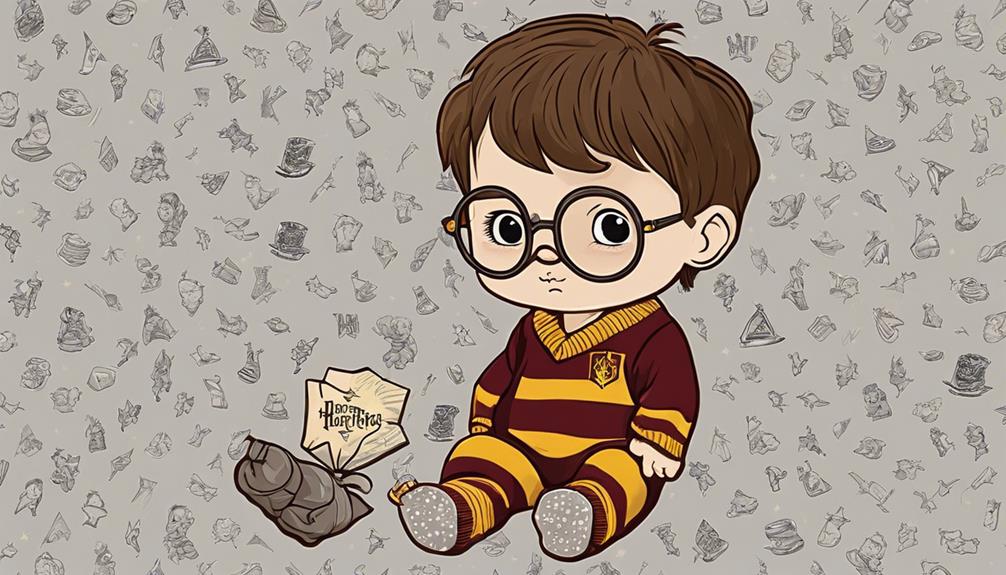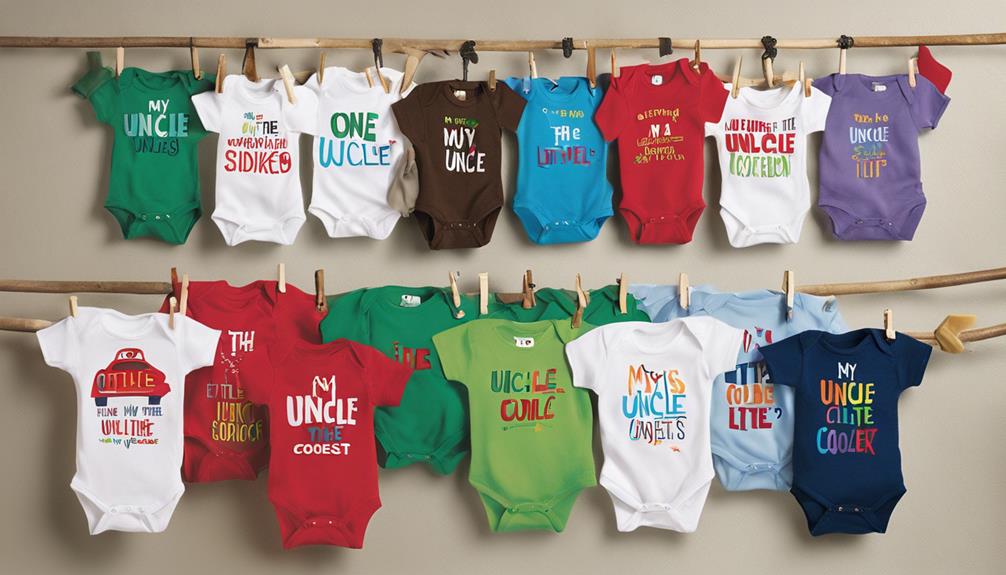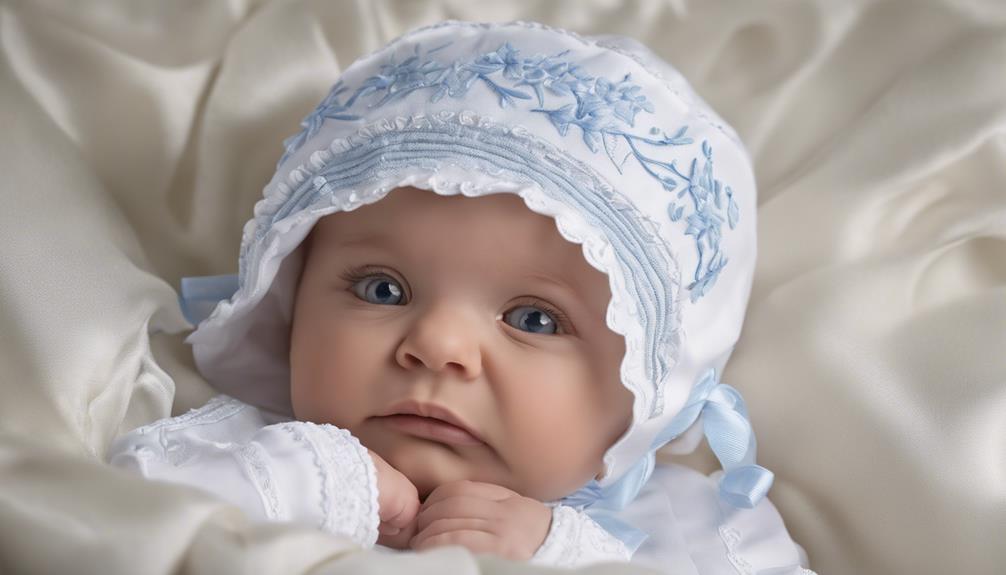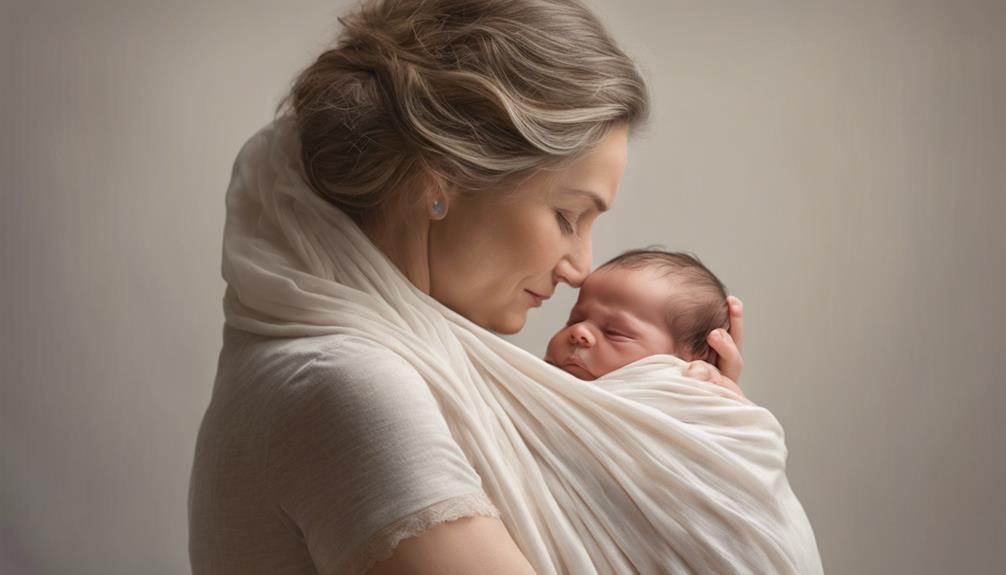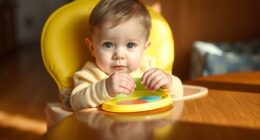Before you start searching for Harry Potter baby gear, consider the age of the little wizard.
But that's just the beginning.
The material, design details, and customization options play a vital role in selecting the perfect outfit for your mini-magic enthusiast.
So, how do you make the best choice that will not only be adorable but also comfortable and safe?
Key Takeaways
- Prioritize comfort with soft, breathable 100% cotton fabrics
- Choose designs with secure closures and no choking hazards
- Look for machine washable options for easy care
- Consider budget-friendly sets or mix-and-match pieces for cost-effective outfits
Fabric Selection
When selecting Harry Potter baby clothes, prioritize fabrics that blend softness, durability, and warmth for your little wizard's comfort and style.
Choosing items made from 100% cotton guarantees a soft and breathable feel against your baby's delicate skin. Look for cotton blends, like those with 60% cotton and 40% polyester, for added durability and easy care, perfect for your busy days with your mini-magician.
For chillier days, opt for cozy materials such as fleece to keep your little one snug and warm while showcasing their magical style. These fabrics not only provide comfort but also make cleaning a breeze; just check the care instructions to make sure they're suitable for machine washing.
Age-Appropriate Styles
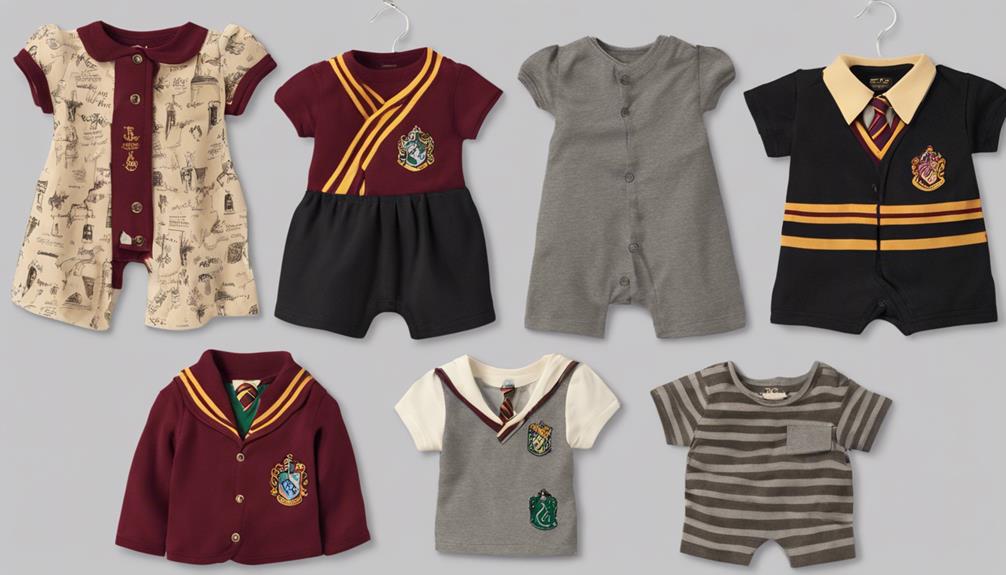
Let your little wizard shine in age-appropriate styles with Harry Potter baby clothes that combine comfort and charm effortlessly. When choosing Harry Potter baby clothes, consider outfits like the Harry Potter Gryffindor tulle dress or the Harry Potter Ravenclaw tulle skirt and headband set. These pieces offer a delightful touch of magic while being gentle on your baby's delicate skin.
Opt for soft cotton fabrics that guarantee your baby stays cozy and comfy all day long. Look for designs with convenient features like snap closures or elastic waistbands for easy dressing and undressing.
Keep in mind that age-appropriate styles prioritize safety and comfort, so avoid any small parts or embellishments that could be a choking hazard. By selecting Harry Potter baby clothes that are both charming and suitable for your little one's age, you can create magical moments while keeping your baby stylish and secure.
Safety Considerations
Considering your baby's safety is paramount, make sure that the Harry Potter baby clothes you choose are crafted from soft, breathable materials like 100% cotton to prevent skin irritation. To check for securely attached embellishments such as buttons, zippers, and embroidery to avoid any choking hazards that could harm your little wizard or witch. Opt for baby clothes that are machine washable for easy cleaning and maintenance, making certain that your baby can wear their magical outfits as often as they wish. Avoid any baby clothes with loose strings, ribbons, or dangling accessories that may pose a strangulation risk, keeping your baby safe while they explore the enchanting world of Hogwarts. Prioritize baby clothes with flat seams to prevent any rubbing or discomfort on your baby's delicate skin, allowing them to cast spells and roam the wizarding world in comfort and style.
| Safety Considerations | |
|---|---|
| Soft, Breathable Material | Check for 100% cotton to prevent skin irritation. |
| Securely Attached Embellishments | Ensure buttons, zippers, and embroidery are well-attached to avoid choking hazards. |
| Machine Washable | Look for easy cleaning options for convenient maintenance. |
| Avoid Loose Accessories | Steer clear of any dangling items that could pose a strangulation risk. |
Comfort and Fit
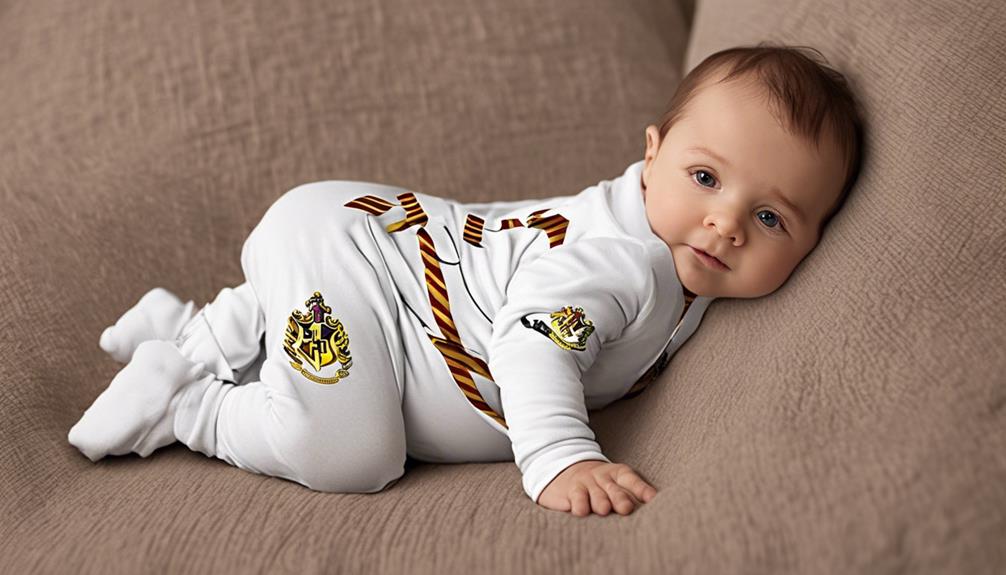
Crafted from soft and breathable materials like 100% cotton, Harry Potter baby clothes guarantee maximum comfort for your little magical bundle.
When selecting an outfit for your tiny wizard or witch, prioritize both comfort and fit. Look for clothing sets with adjustable closures and stretchy fabrics to provide a vital yet flexible fit that allows for movement and growth.
Opt for tagless designs to prevent any irritation on your baby's sensitive skin, ensuring they stay cozy all day long. Choosing essential sizes is critical to avoid any tightness or constriction, allowing your little one to explore comfortably.
Consider features like snap closures or elastic waistbands for easy dressing and undressing, making your life simpler. By focusing on comfort and fit, your baby can rock their Harry Potter attire with style and ease.
Budget-Friendly Options
To snag some enchanting Harry Potter baby clothes without breaking the bank, check out the budget-friendly options starting at just £14.00.
Immerse yourself in the magical world of Hogwarts with sets priced between £13.00 to £24.00 during sale periods, offering fantastic discounts of up to 43% off.
Mix and match individual pieces to create adorable and cost-effective outfit choices for your little wizard or witch.
Take advantage of discounts and promotions to maximize the value of your budget while dressing your baby in spellbinding attire.
Whether you're looking for onesies, bibs, hats, or full sets, there are plenty of affordable options available to satisfy your Harry Potter cravings.
Embrace the charm of the wizarding world while keeping your wallet happy with these unbeatable sale prices on a variety of magical baby clothes.
Frequently Asked Questions
Should I Buy 0000 or 000?
For your little bundle, ponder this: 0000 suits tiny tots snugly, while 000 fits those a bit bigger. Consider birth weight; opt for 0000 if petite, 000 if not. Check brand sizes for the perfect fit.
How Many 0-3 Outfits Do I Need?
You'll need about 5 to 7 outfits in the 0-3 month size range. Consider laundry frequency and messes. Opt for a mix of onesies, sleepers, and outfits. Babies grow fast, so a few extras won't hurt. Look for versatile pieces for easy mix-and-match styles.
Is 3-6 the Same as 6 Months?
When choosing baby clothes, remember 3-6 months isn't exactly the same as 6 months. It covers a range. Pick the right size for a comfy fit. Check the brand's sizing guide. Let your little one play freely!
Is 0-3 Months the Same as 3 Months?
When it comes to baby clothing sizes, 0-3 months and 3 months aren't exactly the same. 0-3 months covers newborns up to 3 months old, while 3 months is more tailored to babies around 3 months. Always check sizing charts for the best fit.
Conclusion
So, there you have it! When selecting Harry Potter baby clothes, remember to take into account the fabric, age-appropriate styles, safety, comfort, and budget-friendly options.
Did you know that over 500 million Harry Potter books have been sold worldwide?
Keep your little wizard or witch stylish and cozy in their magical outfits. Happy shopping!
